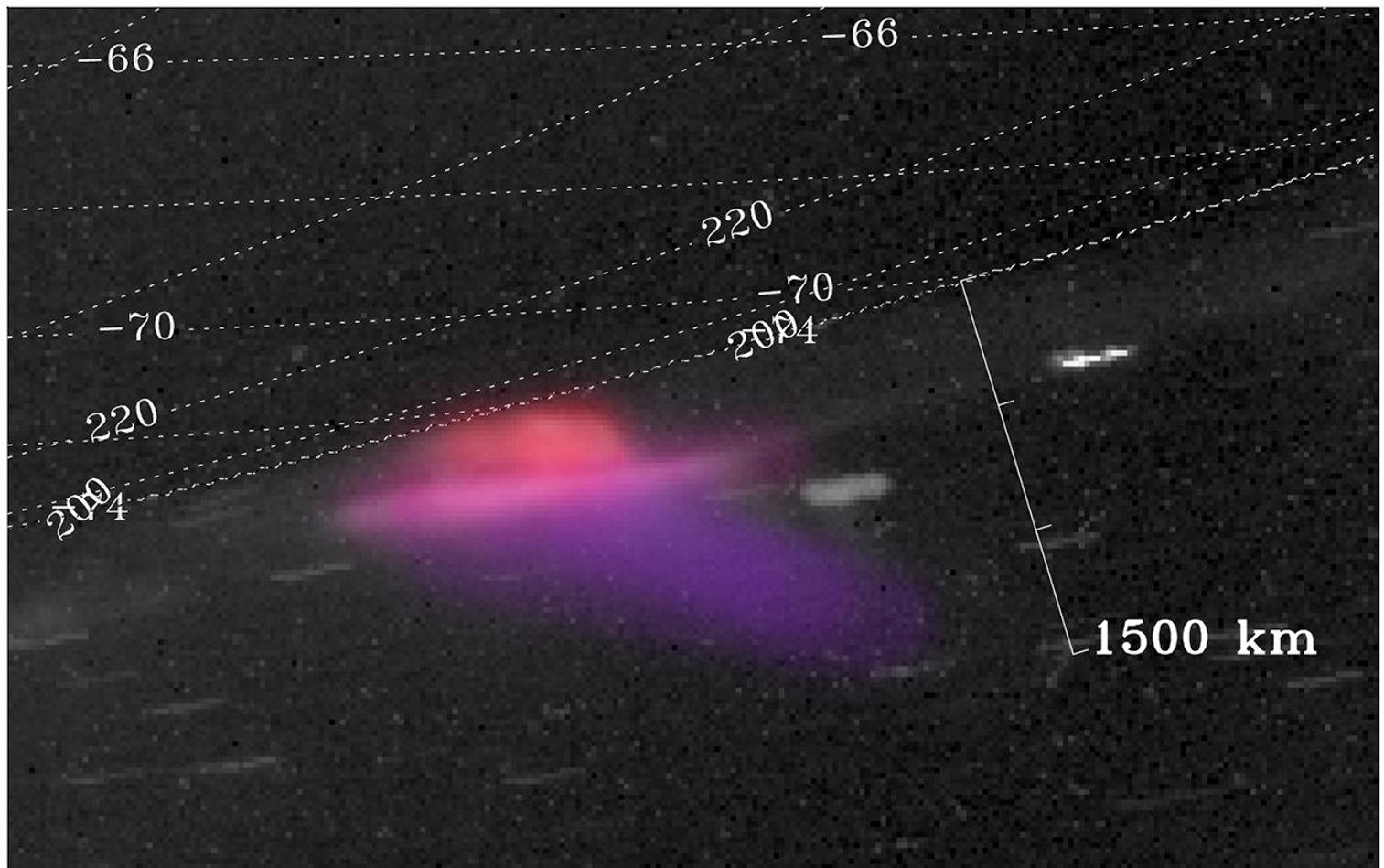Saturn’s Colorful Aurora (annotated)
| PIA Number | PIA17668 |
|---|---|
| Language |
|
While the curtain-like auroras we see at Earth are green at the bottom and red at the top, NASA's Cassini spacecraft has shown us similar curtain-like auroras at Saturn that are red at the bottom and purple at the top. This is how the auroras would look to the human eye.
The color difference occurs because Earth's auroras are dominated by excited nitrogen and oxygen atoms and molecules, and Saturn's auroras are dominated by excited forms of hydrogen. Within each element, colors can differ because of atmospheric density, the levels of the atomic version of an element versus the molecular version, and the energy of impacting electrons.
The height of this particular part of the aurora is about 870 miles (1,400 kilometers).
This image from Cassini's imaging cameras shows particularly bright auroras on Nov. 29, 2010. Star tracks appear in the clear sky due to the spacecraft’s motion. Color was derived from the measurements in red, green and blue filters. In the annotated version, the longitude and latitude are marked on the planet with white dashed lines. An unannotated version is also available.
The Cassini-Huygens mission is a cooperative project of NASA, the European Space Agency and the Italian Space Agency. The Jet Propulsion Laboratory, a division of the California Institute of Technology in Pasadena, manages the mission for NASA's Science Mission Directorate in Washington. The Cassini orbiter and its two onboard cameras were designed, developed and assembled at JPL. The imaging team is based at the Space Science Institute, Boulder, Colo.
For more information about the Cassini-Huygens mission visit http://saturn.jpl.nasa.gov or http://www.nasa.gov/cassini . The Cassini imaging team homepage is at http://ciclops.org .
Credit: NASA/JPL-Caltech/Space Science Institute























